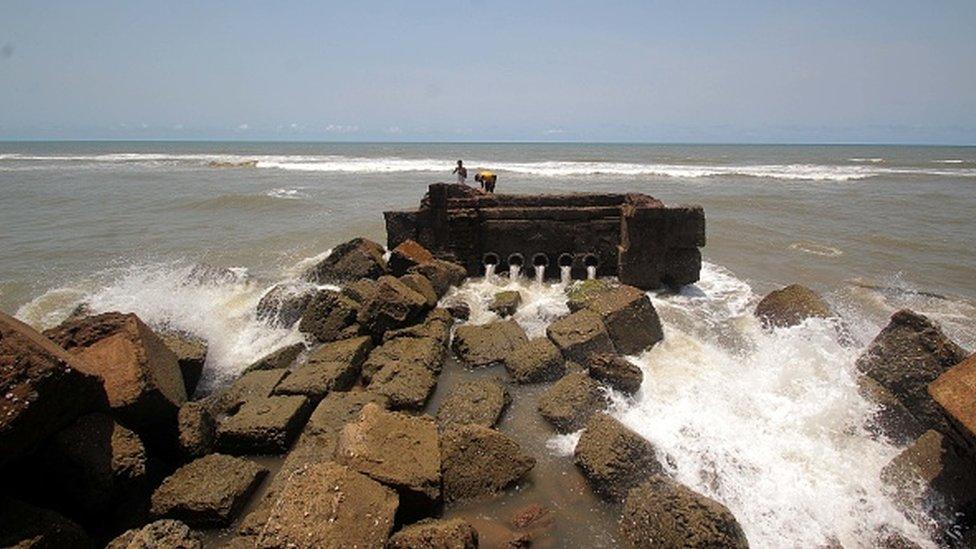Cyclone Amphan: India's east coast braces for severe storm
- Published

The cyclone is likely to make landfall on Wednesday afternoon
Indian officials are on alert after Cyclone Amphan - due to make landfall on the east coast - looks likely to intensify into a "very severe" storm.
The storm is expected to make landfall on Wednesday and hit West Bengal and Orissa (Odisha) states. Twenty relief teams have been dispatched there.
Prime Minister Narendra Modi is due to chair a high-level meeting to further discuss preparations for the storm.
The cyclone comes amid huge levels of migration from the cities to villages.
Tens of thousands of people are fleeing cities in the wake of a lockdown to curb the spread of coronavirus. Both states are seeing large numbers of people return.
There are fears about the impact of the storm on them - many are on foot.
Cyclone Amphan intensifies over Bay of Bengal
This would be the first super cyclonic storm in the Bay of Bengal since the 1999 super cyclone that hit the Orissa coast and killed more than 9,000 people, according to BBC Weather.
India's meteorological department has issued a "yellow alert" for the region, advising fishermen not to "venture into the south Bay of Bengal during the next 24 hours, and north Bay of Bengal from 18-20 May".
A '"yellow alert" or "cyclone alert" is issued "of the expected commencement of adverse weather over the coastal areas".
Allow X content?
This article contains content provided by X. We ask for your permission before anything is loaded, as they may be using cookies and other technologies. You may want to read X’s cookie policy, external and privacy policy, external before accepting. To view this content choose ‘accept and continue’.

In a bulletin, the weather department said the storm is likely to move across the north-west Bay of Bengal, and cross West Bengal and Bangladesh coasts from noon local time on 20 May as a "very severe cyclonic storm".
It also warned of rough seas, with storm surges that could inundate coastal areas.
Heavy rainfall warnings have been issued for West Bengal and Orissa - 200-250mm of rain is expected between Tuesday night and Thursday morning.
Beginning Monday evening, Orissa is planning to evacuate more than a million people from coastal areas and accommodate them in more than 550 cyclone shelters.
The head of India's National Disaster Relief Force (NDRF), SN Pradhan, said they were watching the situation closely and were in touch with state governments.
Last June a powerful cyclone that was expected to make landfall on India's western coast changed its course, and moved further into the Arabian sea.
Hundreds of thousands of people had already been evacuated as the region braced for Cyclone Vayu, which was classified as "very severe".
And in May last year India evacuated more than a million people to safety to avoid Cyclone Fani, in which 16 people were killed in Orissa.
In the Bay of Bengal, the cyclone season typically runs from April to December.